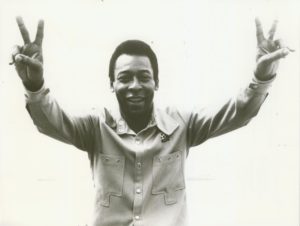England v Spain in the 2024 Euro Final
11th July 2024
11th July 2024
4th July 2024
13th June 2024
18th April 2024
11th January 2024
28th September 2023
1st August 2023
Do feel free to order during the next two weeks. We are on a bit of a holiday ‘go-slow’ but orders will be fufilled and sent out…just a little more slowly!
20th July 2023
It’s that time again, when we can hope and dare to dream: that England CAN win the 2023 World Cup in New Zealand and Australia. They have a good chance. It’s a great time for women’s football…and it’s a good time to look back at its history.
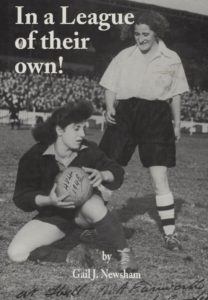 As we all know, women’s football grew massively in World War One. The Dick Kerr Munitions Works encouraged their women workers to play football during World War One to improve their health and morale. After they beat their male factory co-workers in an informal lunchtime match, the women’s team decided to take their football a little more seriously. They played their first public match in 1917 in front of 10,000 spectators. They beat Arundel Coulthard Factory 4-0. By 1920, they were playing St Helen’s Ladies at Goodison Park in front of 53,000 spectators with 14,000 more trying to get into the grounds.
As we all know, women’s football grew massively in World War One. The Dick Kerr Munitions Works encouraged their women workers to play football during World War One to improve their health and morale. After they beat their male factory co-workers in an informal lunchtime match, the women’s team decided to take their football a little more seriously. They played their first public match in 1917 in front of 10,000 spectators. They beat Arundel Coulthard Factory 4-0. By 1920, they were playing St Helen’s Ladies at Goodison Park in front of 53,000 spectators with 14,000 more trying to get into the grounds.
In 1921 the FA banned women’s football from FA grounds. The men had returned from the War and demand for pitches was too great. All of a sudden football was deemed an unsuitable game for women’s health. The ban lasted 50 years. Undeterred, Dick Kerr Munitions Works Women’s team renamed themselves Preston Ladies FC and carried on playing. In 1926 they played the Edinburgh Ladies and won 5-1. Deemed an international match, in fact THE international match, Preston Ladies therefore became unofficial World Champions. It would be great if England could make it official this time around.
16th March 2023
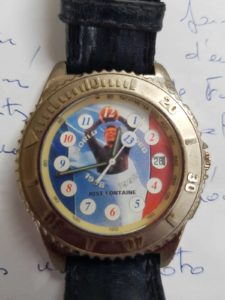 The wristwatch is inscribed to dial “Just Fontaine. World Record 13 goals 1958-1998”. Fontaine, French football legend, presented one of these watches to each of the twenty two members of the French 1958 World Cup Squad to commemorate his extraordinary record of scoring 13 goals in one World Cup tournament, including 4 against the defending champions, West Germany. In case you’re wondering, Pele scored 12 over 4 World Cup tournaments. So far, no one has bettered Fontaine’s record. Fontaine’s debut for France in 1953 gave a few clues as to what he might achieve, three to be exact – the 20 year old scored a hat trick against Luxembourg, ending in a meaty 8-0 score.
The wristwatch is inscribed to dial “Just Fontaine. World Record 13 goals 1958-1998”. Fontaine, French football legend, presented one of these watches to each of the twenty two members of the French 1958 World Cup Squad to commemorate his extraordinary record of scoring 13 goals in one World Cup tournament, including 4 against the defending champions, West Germany. In case you’re wondering, Pele scored 12 over 4 World Cup tournaments. So far, no one has bettered Fontaine’s record. Fontaine’s debut for France in 1953 gave a few clues as to what he might achieve, three to be exact – the 20 year old scored a hat trick against Luxembourg, ending in a meaty 8-0 score.
Subsequently Fontaine presented his dedicated watches to his former teammates after the Final of the 1998 World Cup at the Dinner Banquet. Upon receipt of their watches, each member exchanged with another team mate. Maryan Wisniewski swapped with his room mate Jean Vincent – Wisniewski’s World Cup shirt number was ’22’ and Vincent’s ’21’. The watch we have is number ’21’, engraved to verso. The details of all Fontaine’s thirteen goals are also inscribed to verso. A handwritten letter from Wisniewski (written in French) explains the history of the watch.
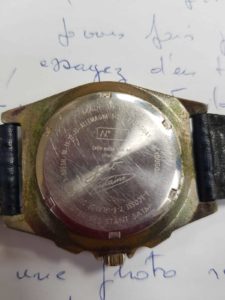 France finished third in the 1958 World Cup, beating West Germany 6-3 in the 3/4th play off match. Wisniewski was no slouch himself: he scored two goals in the Finals in Sweden and played 33 times for France from 1955-63. Wisniewski passed away in 2022. Just Fontaine passed away on 1st March 2023 – this watch encompasses the spirit of two great French football legends.
France finished third in the 1958 World Cup, beating West Germany 6-3 in the 3/4th play off match. Wisniewski was no slouch himself: he scored two goals in the Finals in Sweden and played 33 times for France from 1955-63. Wisniewski passed away in 2022. Just Fontaine passed away on 1st March 2023 – this watch encompasses the spirit of two great French football legends.
19th January 2023
When we sent out our first New Stock Catalogue of the year, we realised it had been a while – too long! – since our last one in September. We reflected on the sporting legends we had lost just since September – way too many. We thought we’d like to make at least brief mention of a few of them here.
They come from so many different sports – boxing’s Gerrie Coetzee from South Africa, formula one’s Patrick Tambay from France and our own horse racing commentator, John Hanmer to name a few. Sadly they were joined by Ryder Cup golfer, Barry Lane, cricket’s Robin Marlar and Jeremy Lloyds, and David English, who raised £14 million for charity through the Bunbury Cricket Club. We lost Maurice Norman, part of the Double-winning Tottenham Hotspur team of 1960-61 and Brian Robinson too, the first British cyclist to finish the Tour de France AND win a Tour Stage.
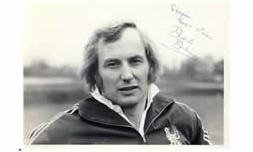
Two great titans of rugby left us too: David Duckham and Doddie Weir. Duckham gained 36 England caps and was part of the revered British Lions squad, who beat the seemingly undefeatable All Blacks in 1971. Scotland’s Doddie Weir also starred with with the British Lions before he was tragically diagnosed with Motor Neurone Disease in 2016. By the time he left us in November, his foundation had raised £8 million for MND research.
All these sportsmen were tremendous and we are honoured to remember them. They were also joined by 3 huge sporting legends: England’s World Cup star, George Cohen, Italy’s Gianluca Vialli and Brazil’s incomparable Pele.
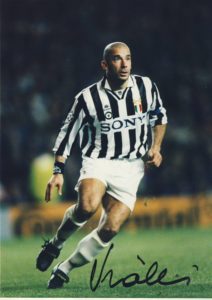 George Best called England World Cup winner, George Cohen, “The best full-back I ever played against”. Cohen spent his entire career in football at Fulham. One could almost describe Gianluca Vialli and Cohen as footballing ‘neighbours’. Vialli was an extremely talented footballer, who played for Italy in 2 World Cups. It was arguably at Fulham’s neighbouring club, Chelsea, however, that he left his most indelible stamp. As a beloved player-manager, he helped Chelsea win the FA Cup, the League Cup and the Cup Winners’ Cup.
George Best called England World Cup winner, George Cohen, “The best full-back I ever played against”. Cohen spent his entire career in football at Fulham. One could almost describe Gianluca Vialli and Cohen as footballing ‘neighbours’. Vialli was an extremely talented footballer, who played for Italy in 2 World Cups. It was arguably at Fulham’s neighbouring club, Chelsea, however, that he left his most indelible stamp. As a beloved player-manager, he helped Chelsea win the FA Cup, the League Cup and the Cup Winners’ Cup.
All of these sportsmen have been phenomenal throughout their respective sporting careers…but when it comes to sporting legends, it is hard for anyone to come close to the late and great Pele. He began his professional career at 15 and made his international debut a year later. He won 3 World Cups as a player over a 14 year international career. In 1999 a poll of Ballon d’Or winners voted him player of the century. He was. We salute him and we salute them all.